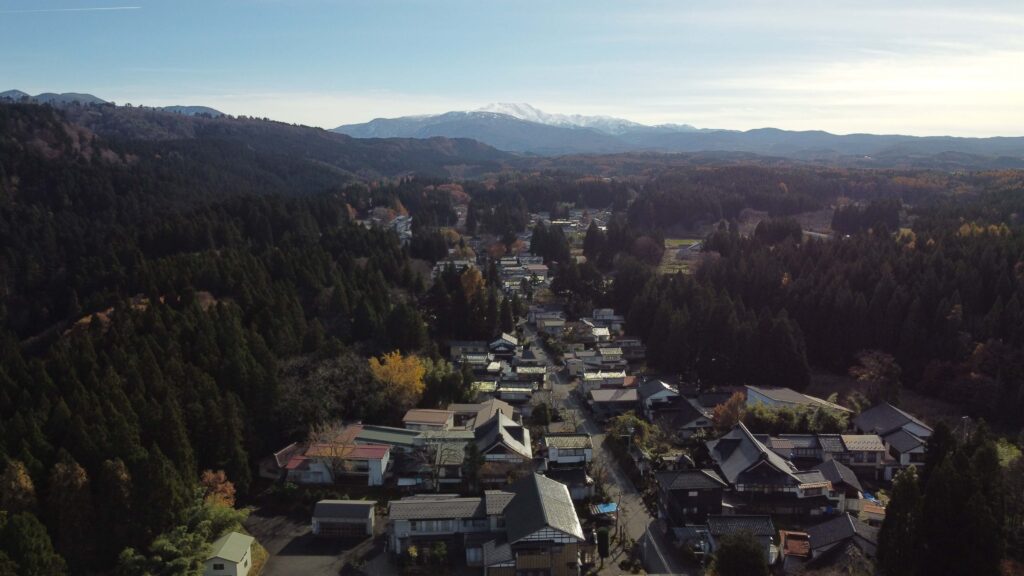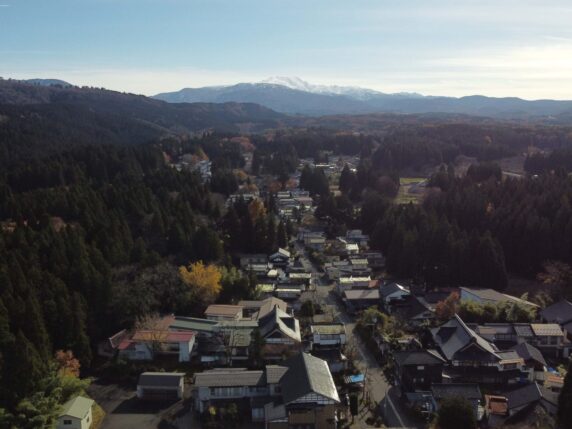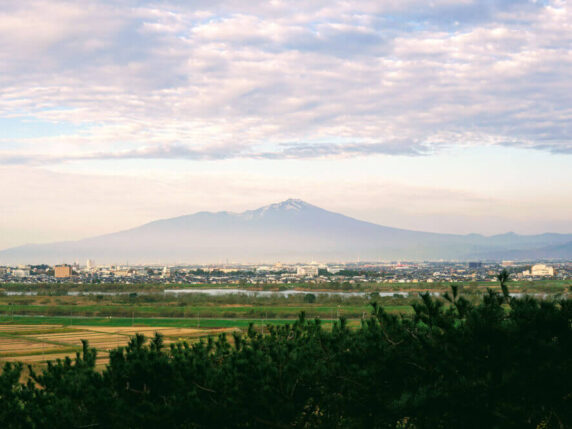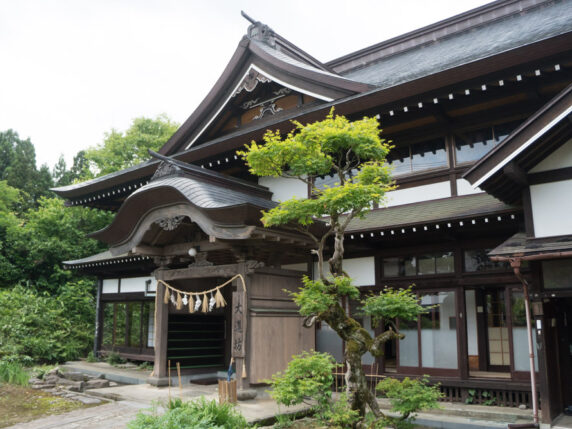Your First Dewa Sanzan Pilgrimage Program
Written by Timothy Bunting
A Pilgrimage Passed Down Through Generations on Dewa Sanzan

Dewa Sanzan, the Three Sacred Mountains of Dewa, are a sacred site of mountain worship in Japan with over 1,400 years of history that continue to thrive as a spiritual destination. Among the three revered mountains, Mt. Haguro stands as an entry point, home to a historical community where Yamabushi (mountain ascetics) have been hosting pilgrims since the Edo period (1603-1868).
In the Edo period, pilgrimages were perilous and often life-threatening. Despite the dangers, people set their sights on these mountains. The base camp for such journeys was a small town of shukubo pilgrim's lodges at the base of Mt. Haguro named Toge (pronounced Taw-geh). Traditionally, pilgrims prepared meticulously before embarking on their trek, spending a night in a shukubo lodge where they readied themselves spiritually and physically to enter the sacred realm.
Centered around pilgrimage groups called Ko, this tradition continues even today. Now you too can experience the faith and customs nurtured by generations, walking alongside Yamabushi and staying in traditional shukubo lodges.
Dewa Sanzan
Located in Yamagata Prefecture, Dewa Sanzan is the collective name for three sacred mountains: Mt. Haguro, Mt. Gassan, and Mt. Yudono. With over 1,400 years of history, these mountains remain a symbol of Japan’s ancient mountain faith. Pilgrimages to Dewa Sanzan flourished among common people during the Edo period particularly in eastern Japan, and the connection between faith and the natural mountain environment is still celebrated today.
Mt. Haguro
One of the gateways to Dewa Sanzan, Mt. Haguro, offers a fascinating journey starting at Toge’s Shukubo Town, the lodging area for this program. The trail to the summit features the 2,446 stone steps rated three stars on Michelin's Green Guide Japan, making it a must-see, lined with centuries-old cedar trees (nationally designated special natural monuments), and the National Treasure Five-Storied Pagoda, among many other sights.
Toge Shukubo Pilgrim's Lodge Town
Toge’s shukubo town is a rare living heritage, home to Yamabushi who still practice their spiritual training while hosting visitors. The shukubo lodges serve as places for pilgrims to prepare before entering the sacred mountains. Customs originating from the Edo period are still alive in this area. By visiting the mountains for real, you can uncover countless stories that breathe life into the present-day landscape.
Pilgrimage Experience Program
This special one-night, two-day pilgrimage program condenses the allure of Dewa Sanzan for first-time visitors. Participants will stay in a traditional shukubo passed down through generations and walk Mt. Haguro alongside Yamabushi. Learning about the Yamabushi lifestyle and worldview will transform the way you see the mountain landscapes.
This program is ideal for those seeking a deeper experience than simply visiting spiritual locations, or for those interested in Japanese traditions, beliefs, and customs. Set against the backdrop of a genuine spiritual site, this unique program offers a truly special experience.
Preserving Culture and History for the Future

The Town of Toge in Tsuruoka City, Yamagata Prefecture, has flourished for over 1,400 years as the gateway town to the sacred Dewa Sanzan. Today, the area still boasts shukubo lodges run by practicing Yamabushi and maintains connections with Ko pilgrimage groups, forming a rare and valuable cultural location.
The relationship between Ko group pilgrimages and the Yamabushi of the shukubo is not simply that of a host and a pilgrim. Generations have formed bonds akin to extended family, visiting each other, praying in the mountains, and deepening their ties together.
However, this tradition faces challenges. The number of Ko members has been steadily declining due to the aging population in Japan, and the once-thriving network of over 300 shukubo lodges has dwindled to just 28, threatening the region's economy and the survival of its cultural heritage.
In response, the 2022 Tourism Agency’s “Historical Resource Utilization Project for Sustainable Tourism Development” supported initiatives in Toge. Collaborating with local experts, the over 300-year-old Shukubo Daishinbo Lodge and local organization Megurun, the project seeks to preserve and share the culture of Kō and shukubo with a broader audience, ensuring these traditions endure for future generations.
This program is designed to welcome anyone, even those entirely unfamiliar with Yamabushi, shukubo, or Dewa Sanzan. We hope this experience will introduce you to the faith, culture, and dedication of the Yamabushi and their traditions in Toge. May it become the starting point for a long and meaningful connection.
Timothy Bunting
Tim Bunting is a Dewa Sanzan Shrine Yamabushi with over 10 years' experience living beneath the three mystical peaks. He is a self-professed Dewa Sanzan nerd, and is currently working on the Yamabushido project and Dewa Sanzan Monzenmachi Project with Megurun Inc. His roles including assisting in Yamabushi trainings, translating, interpreting, and curating Dewasanzan.com.
Insider information and updates on
The Dewa Sanzan.
Subscribe to the Dewa Sanzan Tribe now.



